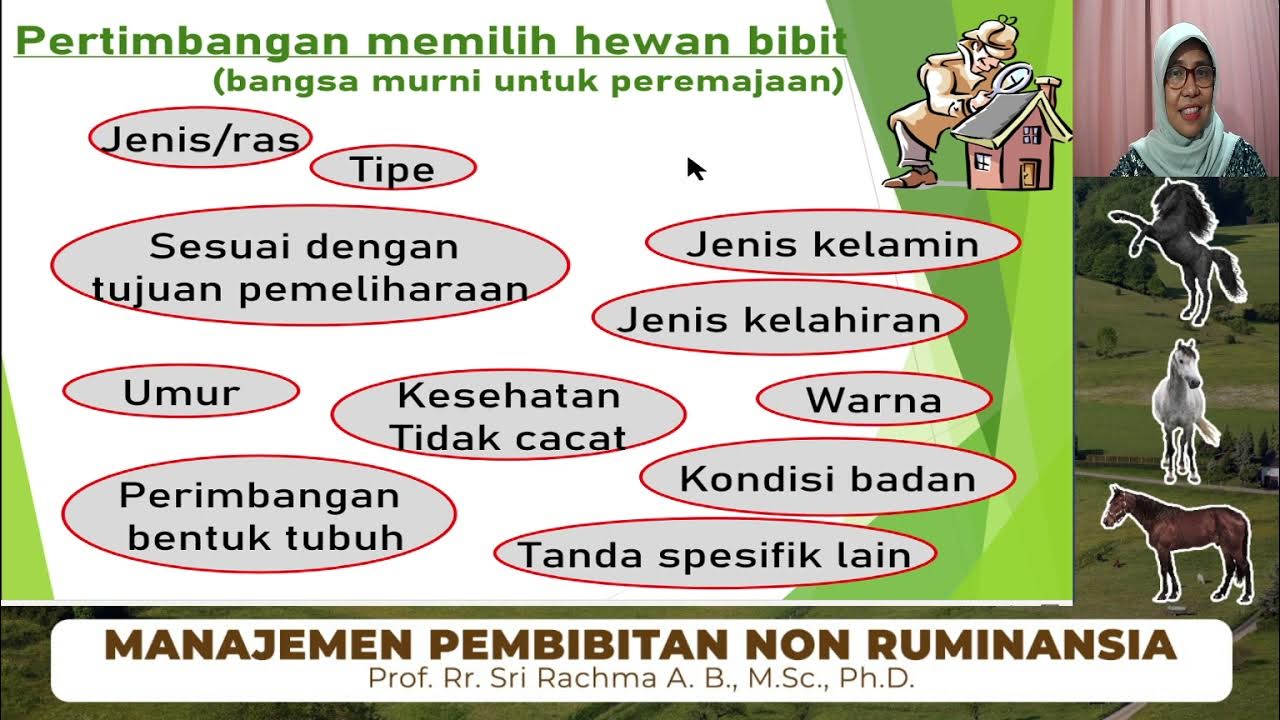GT-KH #9 Easy Way to Know the Age of Goats And Sheep (estimating age) For Ied Al Adha or Aqiqah
Summary
TLDRThis video explains how to determine the age of sheep and goats for sacrificial purposes, focusing on their teeth. The speaker explains that sheep (domba) can be used for korban or akikah once they are between 1 and 2 years old, as indicated by the transition from milk teeth to adult teeth. For goats (kambing), they must be over 1 year old, with adult teeth replacing the milk teeth. The speaker highlights that animals with milk teeth are too young for sacrifice. The video serves as a practical guide to identifying suitable animals for religious offerings.
Takeaways
- 😀 Sheep and goats have specific methods to determine their age based on their teeth.
- 😀 Sheep can be used for sacrificial purposes when they are between 1 to 2 years old, based on their teeth.
- 😀 Sheep with all baby teeth are under 1 year old and not suitable for sacrifice or akikah (a form of sacrifice).
- 😀 For goats, those under 1 year old, with baby teeth, are also unsuitable for sacrifice or akikah.
- 😀 The teeth of sheep change as they age, and this can be used to estimate their age.
- 😀 A sheep's age between 1 and 2 years is indicated by the replacement of its baby teeth with permanent ones.
- 😀 Sheep with small, milk teeth are typically under 1 year old.
- 😀 Goats have two main types in Java: 'wedus' (sheep) and 'wedus gembel' (goats).
- 😀 Goats with baby teeth, or without replacements, are still under 1 year old.
- 😀 Only goats that have started changing their teeth (replacing milk teeth) are considered suitable for sacrifice or akikah, which happens after 1 year of age.
- 😀 The presence of baby teeth in goats and sheep helps determine their eligibility for sacrificial purposes.
Q & A
How do you determine the age of a sheep or goat?
-The age of a sheep or goat is determined by looking at their teeth. For sheep, the age can be estimated by the number of teeth they have, and for goats, the age is determined based on the change in teeth from baby teeth to adult teeth.
What is the significance of the sheep's horns in determining its age?
-The size and condition of the horns can provide some clues about a sheep’s age, but they are not as reliable as teeth for age estimation. In the video, it is mentioned that the horns are smaller on younger sheep.
What is the difference between sheep and goats in terms of age for sacrifice or 'akikah'?
-For sheep, the minimum age for sacrifice or 'akikah' is generally under one year, and they can also be as young as six months. In contrast, goats must be at least one year old before they can be used for sacrifice or 'akikah'.
How do you know if a sheep is suitable for sacrifice or 'akikah'?
-A sheep suitable for sacrifice or 'akikah' is one that is at least one year old, which can be determined by its teeth. If the sheep has adult teeth, it is older than one year and can be used for sacrifice.
What are the types of goats mentioned in the video?
-The video mentions two types of goats in Java: 'wedus' and 'wedus gembel'. The 'wedus' refers to sheep, while 'wedus gembel' refers to goats.
What is the significance of the 'gigi susu' (milk teeth) in determining the age of a goat?
-If a goat still has 'gigi susu' (milk teeth), it indicates that the goat is under one year old and cannot be used for sacrifice or 'akikah'. Once the adult teeth start replacing the milk teeth, the goat becomes eligible for such purposes.
What happens when the goat's teeth change from milk teeth to adult teeth?
-When the goat’s teeth change from milk teeth to adult teeth, it indicates that the goat is older than one year, and it becomes eligible for sacrifice or 'akikah'.
Why is it important to check the teeth of a goat before sacrifice?
-Checking the teeth helps determine the goat's age, which is crucial because goats under one year old are not suitable for sacrifice or 'akikah'. The video emphasizes this by showing the goat with milk teeth, indicating it’s under one year old.
How do you identify whether a sheep is younger or older than one year?
-A sheep that is under one year old will have baby teeth, also known as milk teeth. When it gets older and its adult teeth start replacing the milk teeth, it becomes at least one year old.
Can sheep younger than one year be used for sacrifice or 'akikah'?
-Yes, sheep younger than one year, including those as young as six months, can be used for sacrifice or 'akikah', as long as they meet the necessary age and health requirements.
Outlines

This section is available to paid users only. Please upgrade to access this part.
Upgrade NowMindmap

This section is available to paid users only. Please upgrade to access this part.
Upgrade NowKeywords

This section is available to paid users only. Please upgrade to access this part.
Upgrade NowHighlights

This section is available to paid users only. Please upgrade to access this part.
Upgrade NowTranscripts

This section is available to paid users only. Please upgrade to access this part.
Upgrade Now5.0 / 5 (0 votes)





